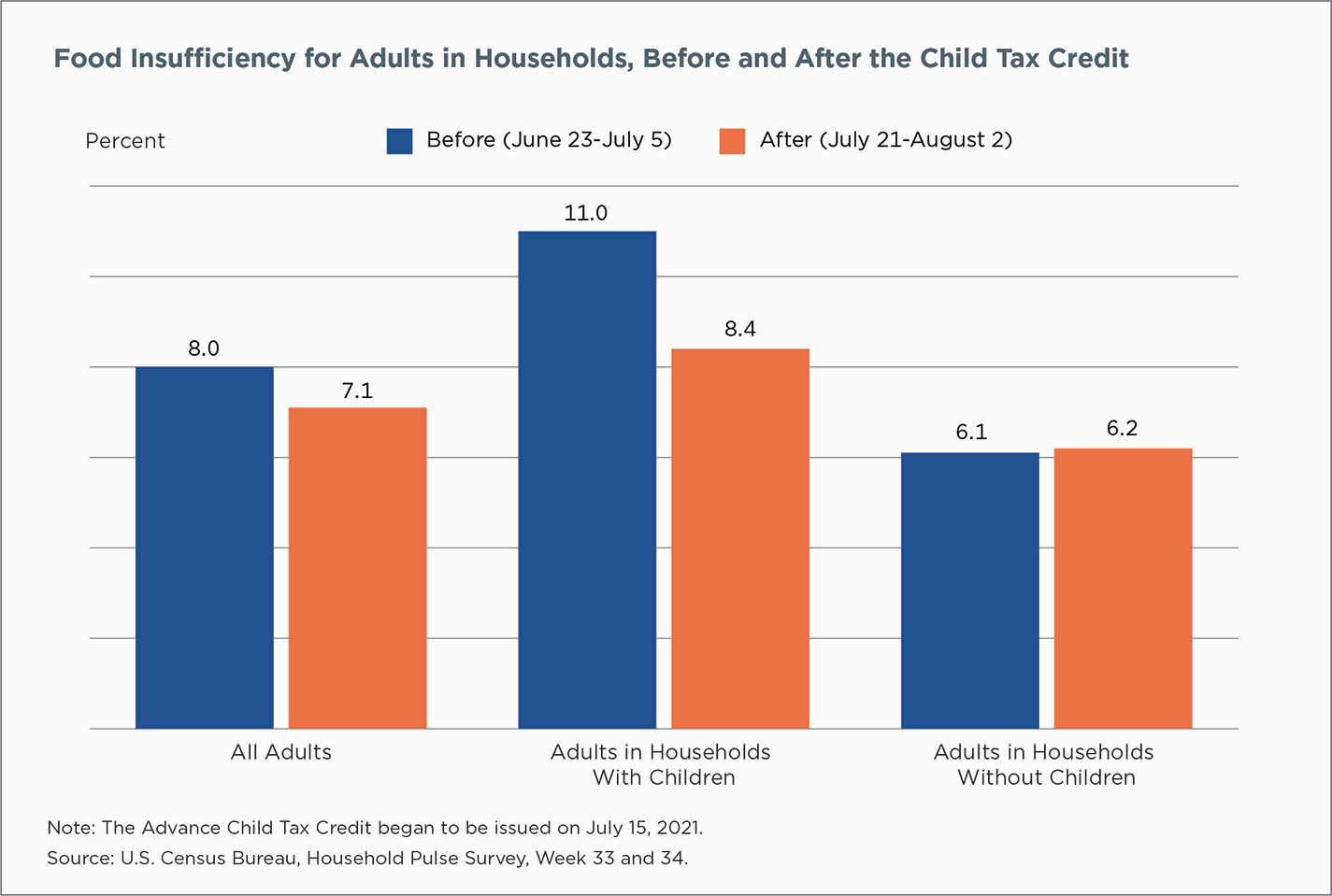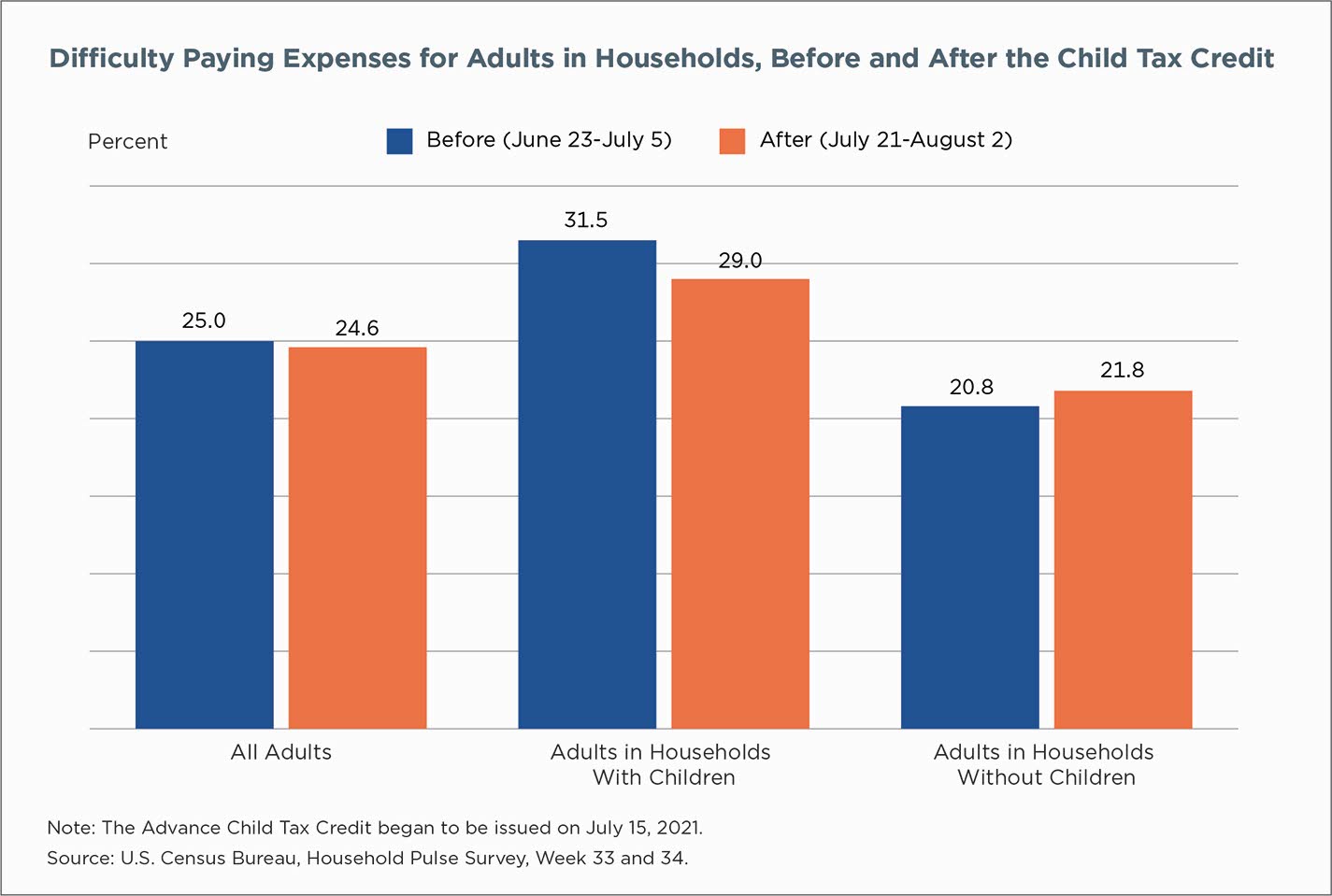By: DANIEL J. PEREZ-LOPEZ
A drop in the number of households with children that reported food insufficiency and trouble paying household expenses may be linked to the child tax credit checks issued last month, according to new Household Pulse Survey (HPS) results.
The Internal Revenue Service last month (July 15) began issuing a monthly Advance Child Tax Credit (CTC) to families with children. About 35 million eligible families received the first monthly payment of up to $300 for each child age 5 and under and up to $250 for each child ages 6 to 17. Payments will continue monthly through December.
Even though adults in households with children are more likely to experience food insufficiency, those households saw a 3% decline between the surveys conducted before and after the CTC payments.
The U.S. Census Bureau’s experimental HPS collected survey responses just before and just after the arrival of the first checks.
The survey shows introduction of the CTC coincided with a drop in food insufficiency in households with children. It also showed that in those households, there was a drop in difficulty paying weekly expenses.
Several changes were made to the child tax credit as part of the American Rescue Plan, signed in March 2021.
The program provides the tax credit to all families with children, including those who are not required to file a federal tax return.
In addition, the credit was increased — up to $3,600 per year for children ages 5 and under at the end of this year on a sliding scale based on income; and up to $3,000 a year for those ages 6 to 17. Half of the annual credit amount is being paid out in advance in monthly checks that began on July 15.
Food Insufficiency Dropped Quickly After Checks Arrived
Although HPS data show an overall decline in the share of adults in households experiencing food insufficiency (sometimes or often not having enough to eat), the drop was largely driven by adults in households with children.
Even though adults in households with children are more likely to experience food insufficiency, those households saw a 3% decline between the surveys conducted before and after the CTC payments.
Adults in households without children did not see a change in food insufficiency during the same period.

Financial Hardship of Families With Children Also Dropped
The HPS asks respondents how difficult it was to pay their usual household expenses in the previous week. Adults in households with children were more likely to say that it was somewhat difficult or very difficult in both time periods.
However, when we compare households with children before and after the arrival of the CTC payments, we see a decline in the share of adults in households struggling to pay expenses.
In contrast, the share of adults in households without children that had difficulty paying expenses increased slightly during this period.

How Families Spent Their CTC
Many HPS respondents reported spending their CTC payments on more than one thing. About 47% reported spending it on food.
Nearly 10% of adults in households that received the CTC — and 17% of those with at least one child under age 5 — spent their CTC on child care.
About HPS
The HPS is designed to provide near real-time data on how the pandemic has affected people’s lives. Information on the methodology and reliability of these estimates can be found in the source and accuracy statements for each data release.
Data users interested in state-level sample sizes, the number of respondents, weighted response rates and occupied housing unit coverage ratios, can consult the quality measures file available at the same location.
The data were collected from July 21-August 2 during week 34 of the survey. The Census Bureau sent invitations to 1,042,642 households and received a total of 64,562 responses, for a weighted response rate of 6.1%.
_______________________________________________
About the Author: Daniel J. Perez-Lopez is a statistician in the Census Bureau’s Social, Economic and Housing Statistics Division.


















